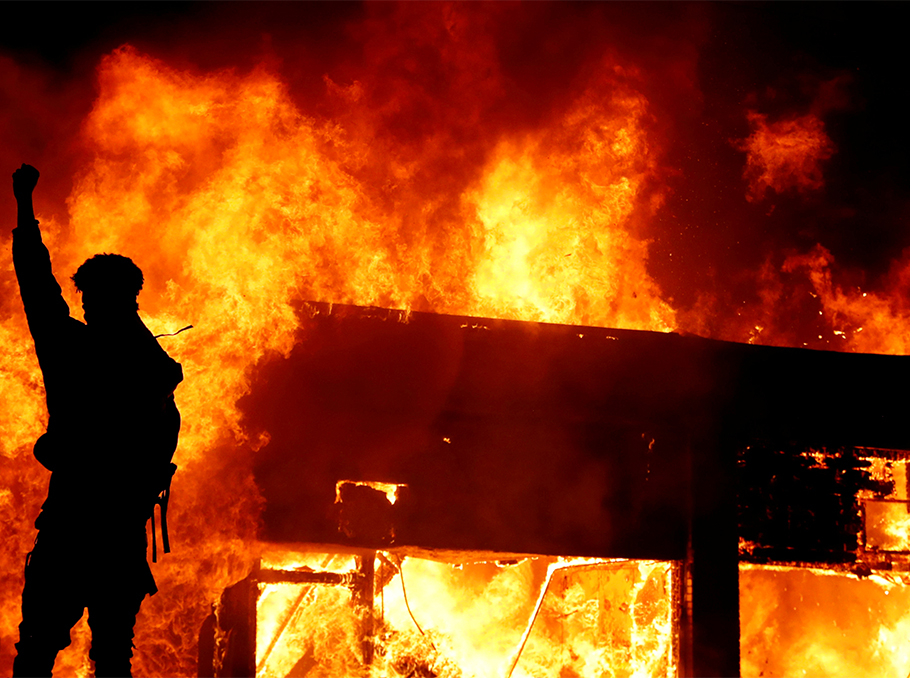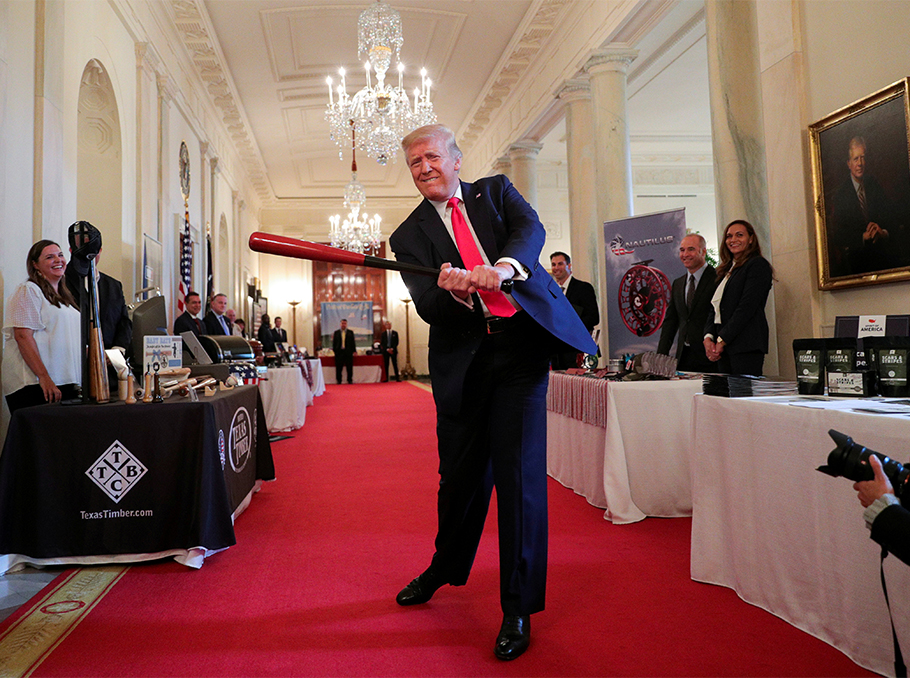Harold James is Professor of History and International Affairs at Princeton University.
The Soviet Union was fertile ground for political jokes, which featured as prominently in the culture as late-night comedy does in the United States. According to one popular story, a young man who shouted in Red Square that the decrepit Soviet leader Leonid Brezhnev was an idiot ended up being sentenced to 25.5 years in prison – six months for insulting the Chairman of the Presidium of the Supreme Soviet, and 25 years for revealing state secrets.
The Trump administration’s furious reaction to a new book by former National Security Adviser John Bolton has followed a similar script. The book is considered dangerous not so much because it insults Donald Trump as because it reveals that the president is deeply incompetent and “stunningly uninformed.” If it wasn’t obvious already, the whole world now knows that the US lacks any strategic orientation or coherent executive leadership.

Photo: REUTERS
In fact, many aspects of America’s current annus horribilis recall the final years of the Soviet Union, starting with the intensification of social and political conflict. In the Soviet case, long-suppressed ethnic rivalries and competing national aspirations quickly bubbled to the surface, pushing the entire country toward violence, secession, and disintegration. In the US, Trump’s response to nationwide protests against racism, police brutality, and inequality has been to stoke further the country’s historic racial divide. And, like statues of Lenin during the collapse of the Soviet empire, statues of Confederate leaders are being toppled just about everywhere.

Photo: REUTERS
Another parallel concerns the economy. The Soviet Union had a large, complicated planning and resource-allocation apparatus that attracted the society’s best-educated people, only to consign them to unproductive and frequently destructive tasks. The US has Wall Street. To be sure, America’s vast financial-services sector is not the equivalent of Gosplan (the Soviet State Planning Commission), but it does frequently extract value rather than create it, and thus will inevitably be part of any debate about the allocation of resources.
Up until the moment the Soviet system collapsed, very few thought it could actually happen. In assessing the state of the American system, it is important to remember that economists are not very good at prediction. The entire discipline relies on extrapolating from contemporary conditions on the assumption that the underlying fundamentals of what is being analyzed will not change. Knowing full well that this is an unrealistic and absurd assumption, economists often emulate medieval theologians by dressing up their prognoses in arcane language and jargon. One doesn’t need to know Latin to invoke ceteris paribus (“other things being equal”) as the premise of one’s forecasts.

Photo: REUTERS
Given this standard practice, we should pay close attention to long-run counter-intuitive forecasts that actually are borne out. In the late 1960s, the economist Robert A. Mundell made three predictions: that the Soviet Union would disintegrate; that Europe would adopt a single currency; and that the dollar would retain its status as the dominant international currency. Considering that the par-value system (gold standard) collapsed soon thereafter, triggering a depreciation of the dollar, these looked like wild predictions. But Mundell turned out to be right on all three counts.
But the circumstances to which the dollar owes its longstanding hegemony are now changing. The COVID-19 pandemic is driving a more digitalized form of globalization. While the cross-border movement of people and goods plummets, information is flowing like never before, ushering in an increasingly weightless economy.

Photo: REUTERS
Moreover, for the past three and a half years, the Trump administration has been inviting an eventual backlash against its weaponization of the dollar for political ends. Financial and secondary sanctions were highly effective in their original form, when they were directed against small, isolated bad actors like North Korea. But their more extensive deployment against Iran, Russia, and Chinese companies has proved counterproductive. Not only Russia and China but also Europe have quickly taken steps to develop alternative mechanisms for international payments and settlement.

Photo: REUTERS
Non-state digital payments systems are also undergoing rapid development, particularly in places where the state is weak, distrusted, or otherwise lacking credibility. The payments revolution will likely occur fastest in poor countries, such as in Africa or some former Soviet republics. New digital technologies already offer these societies the means to move from poverty and institutional underdevelopment to institutional complexity and the chance of innovation and prosperity.

Photo: REUTERS
The dollar’s longstanding centrality reflected global demand for a deep, liquid safe asset. But that condition will disappear when alternative safe assets emerge, particularly if they are backed by non-state providers. More to the point, the dollar’s long reign over the international financial system depended on the US remaining economically stable, financially credible, and culturally open. Now that the US system’s dysfunctions are being laid bare, the rest of the world may start to question its basic competence and state effectiveness.
The COVID-19 crisis is a case in point. In terms of the number of cases and deaths, and the effectiveness of containing the virus, the US has performed poorly relative to most other countries – and all other developed countries. Under President Donald Trump, America has become an international embarrassment.

Photo: REUTERS
Under these conditions, the dollar won’t be able to buy as much internationally as it once did, and it may even start to look like the old Soviet ruble, even if there is a dramatic change in leadership and strategy. After all, Mikhail Gorbachev did not immediately succeed Brezhnev, and by the time he came to power and introduced perestroika, it was too late. The malaise had become terminal.
Copyright: Project Syndicate, 2020.





















Comments
Dear visitors, You can place your opinion on the material using your Facebook account. Please, be polite and follow our simple rules: you are not allowed to make off - topic comments, place advertisements, use abusive and filthy language. The editorial staff reserves the right to moderate and delete comments in case of breach of the rules.